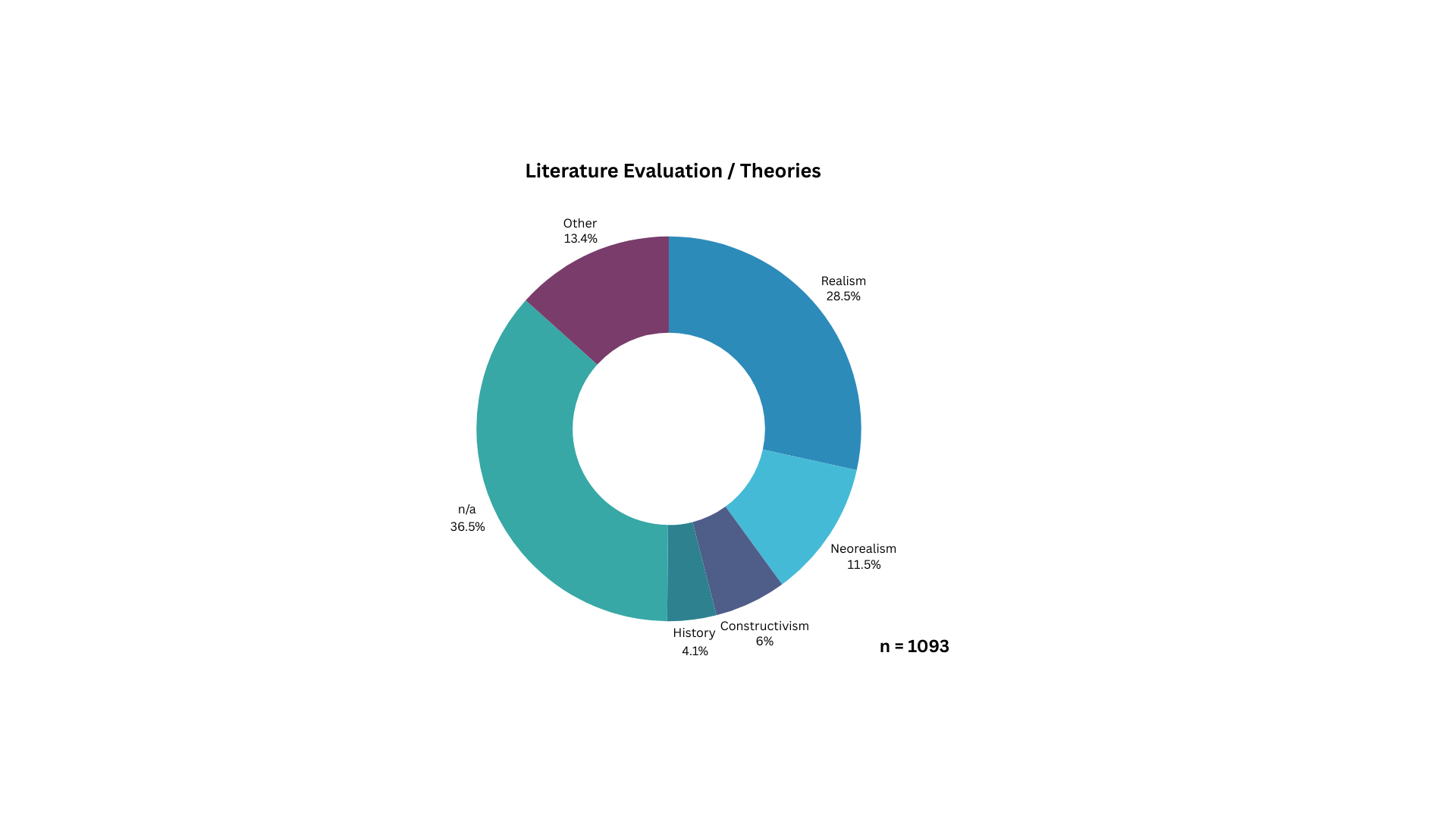
Our evaluation aims to offer insights into how non-proliferation and disarmament issues are taught in practice. By analyzing numerous course outlines, we identify the most common topics, blind spots, and diversity issues in non-proliferation and disarmament education.
Data Sources
For our evaluation, we have created a non-representative dataset which encompasses courses dealing with arms control, disarmament, and non-proliferation at Western universities. Course data and syllabi were obtained by browsing module handbooks and course directories of the EU Non-Proliferation and Disarmament Consortium’s university members. Moreover, we have consulted the Learn WMD Spreadsheet to acquire further data from universities which are not part of the Consortium. Additionally, we have tried to extend the scope of our research to non-western universities, in order to achieve a global overview about teachings of arms control topics. In total we have checked courses at 243 different universities. It appears however, that arms control, disarmament and non-proliferation remain to be topics taught specifically at western universities, with only little to no representation in other regions of the world. It’s also important to stress a linguistic limitation of our research, since we can only evaluate English, German and French resources.
The dataset includes a total of 121 university courses. For 46 of these classes, we were able to obtain Syllabi or course outlines. Out of these 46 syllabi, we have analyzed the required readings in a sample of 44. Out of this sample, 24 lecturers have kindly provided us with the permission for publishing their materials online, of which we have uploaded 24 Syllabi to the website. This amounts to 1093 readings in the dataset.
Evaluation Part I: Courses
Countries
Most courses on non-proliferation and disarmament education in our dataset were taught in the United States (37.2%), Germany (19%), and the United Kingdom (8.3%). These three countries combined accounted for over 60 percent of the university classes we have analyzed. Countries with course numbers under 2.5% were listed in the category “Other”. Those are Belgium, Canada, China, Israel, Italy, Japan, Netherlands, Norway, South Korea, Russia, Switzerland, Sweden, Turkey and the UAE.
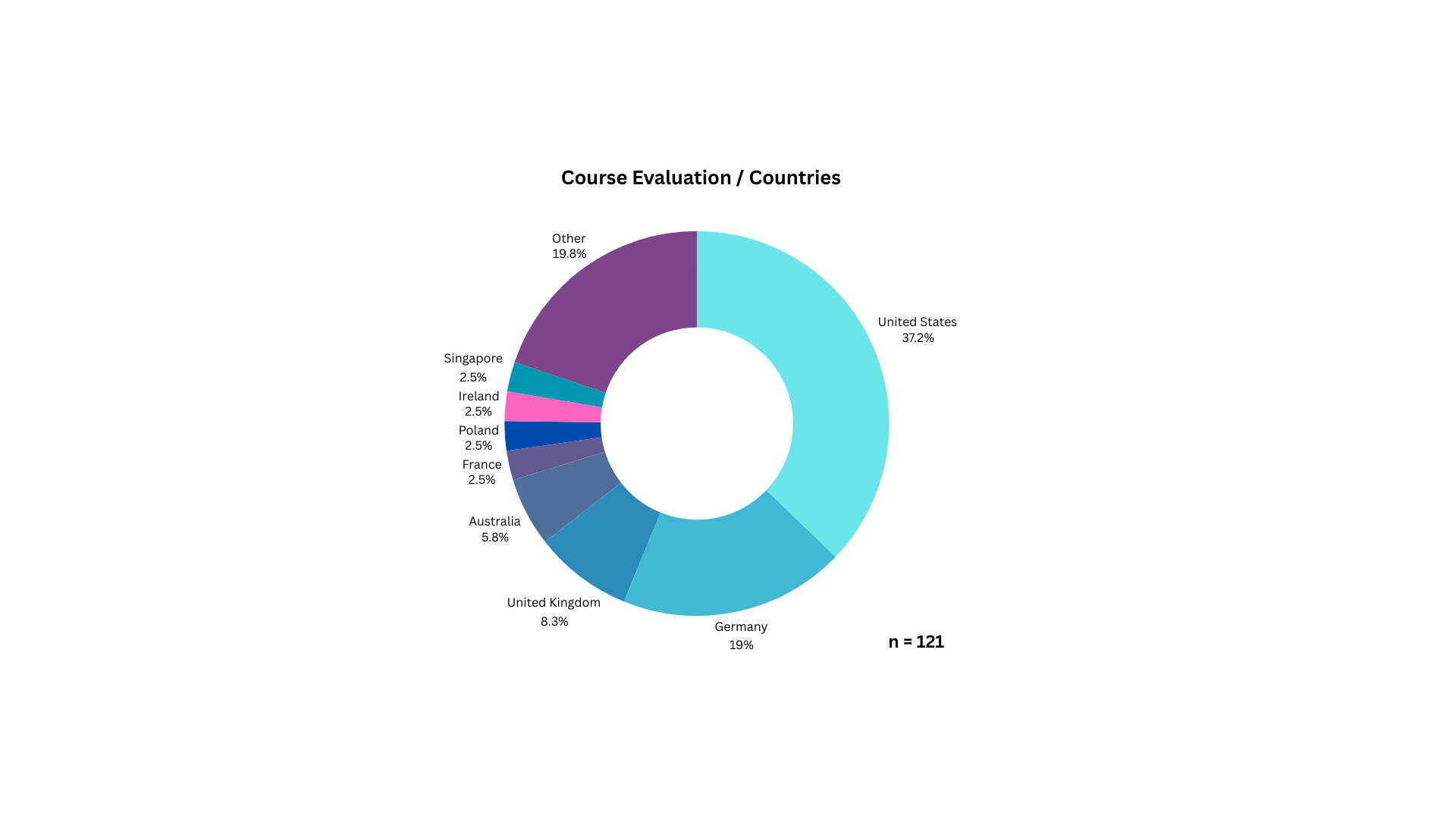
Study Levels
The overwhelming majority of the courses in our dataset (60.3%) was aimed at postgraduate (Master) students, while only a comparatively small share of classes (31.4%) was dedicated to undergraduate (Bachelor) students. For 5.8% of the courses, we were unable to ascertain the study level, and 2.5% were taught cross-level. This uneven distribution may be explained in part by the fact that the Learn WMD Spreadsheet emphasizes postgraduate programs, but it would nevertheless suggest that courses about arms control, disarmament and non-proliferation are primarily taught on the postgraduate level.

Main Topics
Most of the courses in our dataset had nuclear weapons (39.7%), arms control, disarmament and non-proliferation more broadly (28.9%), and weapons of mass destruction (14.9%) as their primary topic. Space has emerged as new topic in academic lectures.
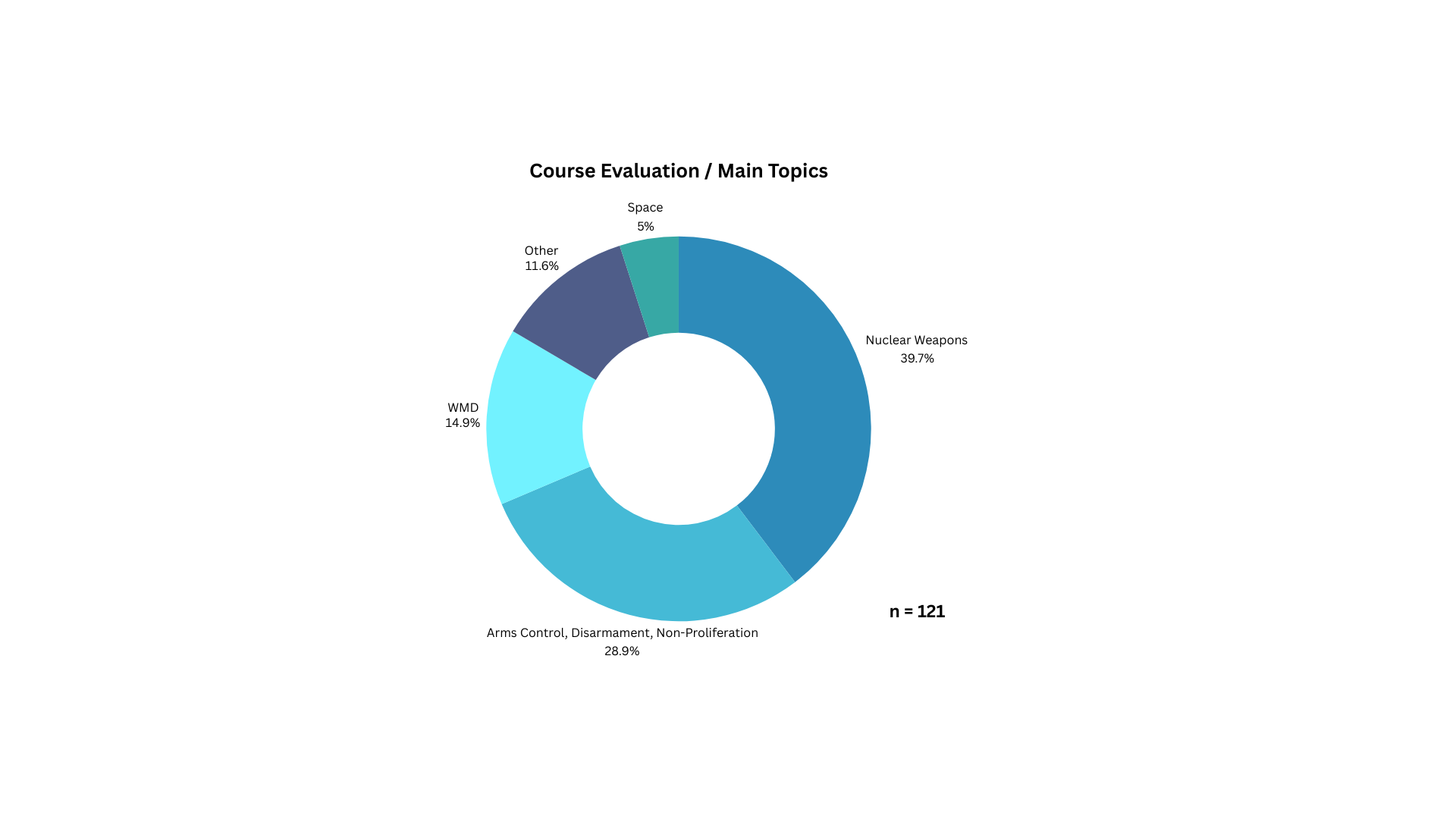
University Departments
Almost all the courses on arms control, disarmament, and non-proliferation in our dataset were taught at a political science or international relations faculty (86%). Only some classes were taught by natural sciences departments or others.
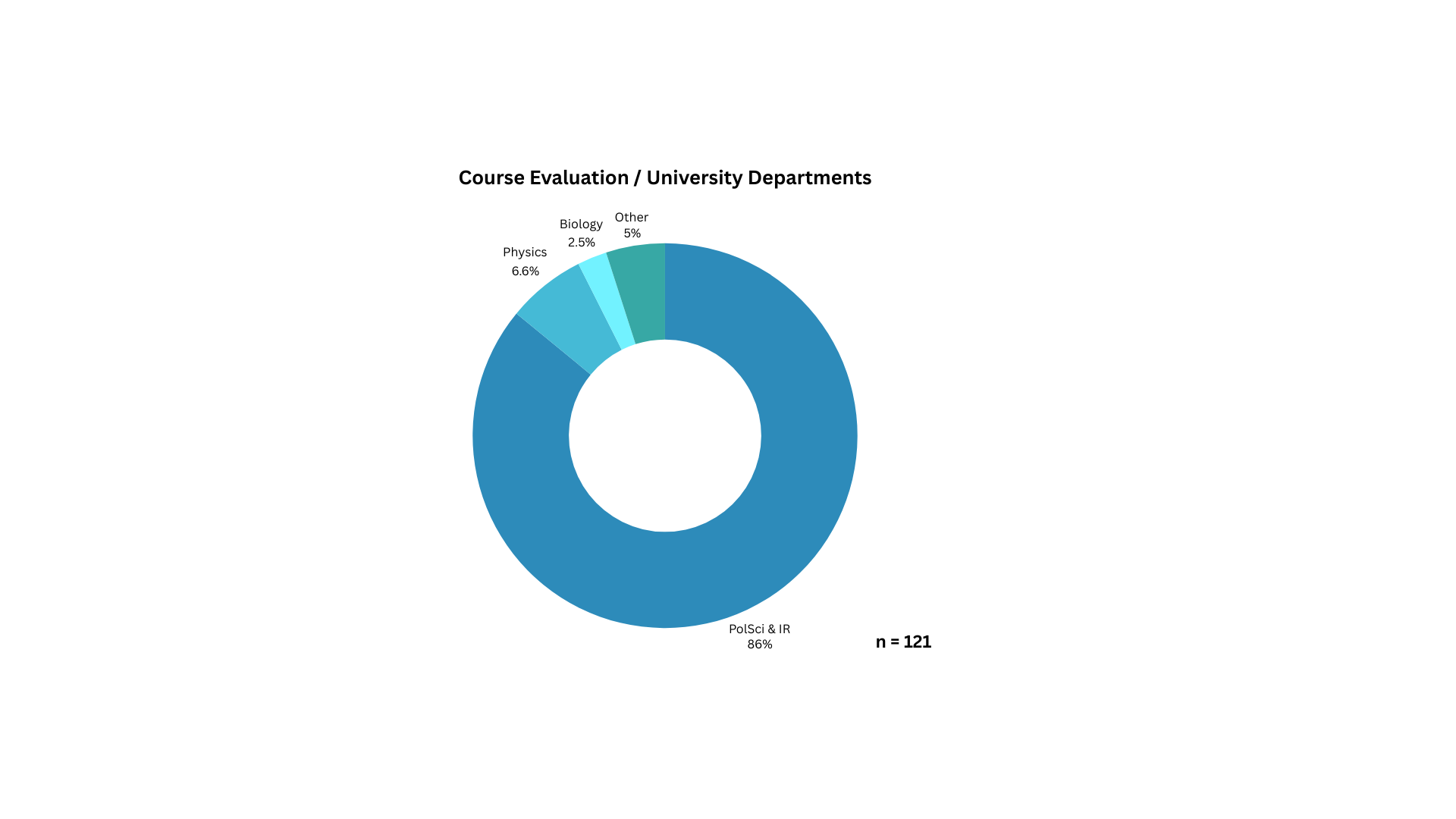
Gender (Instructors)
The gender structure in non-proliferation and disarmament education remains highly uneven. For 64.5% of the courses in our dataset, the instructor was identified as male. Only 22.3% of the classes were taught be female presenting lecturers, and 3.3% were instructed jointly by male and female lecturers. For 9.9% of the courses, we weren’t able to identify the lecturer’s gender.
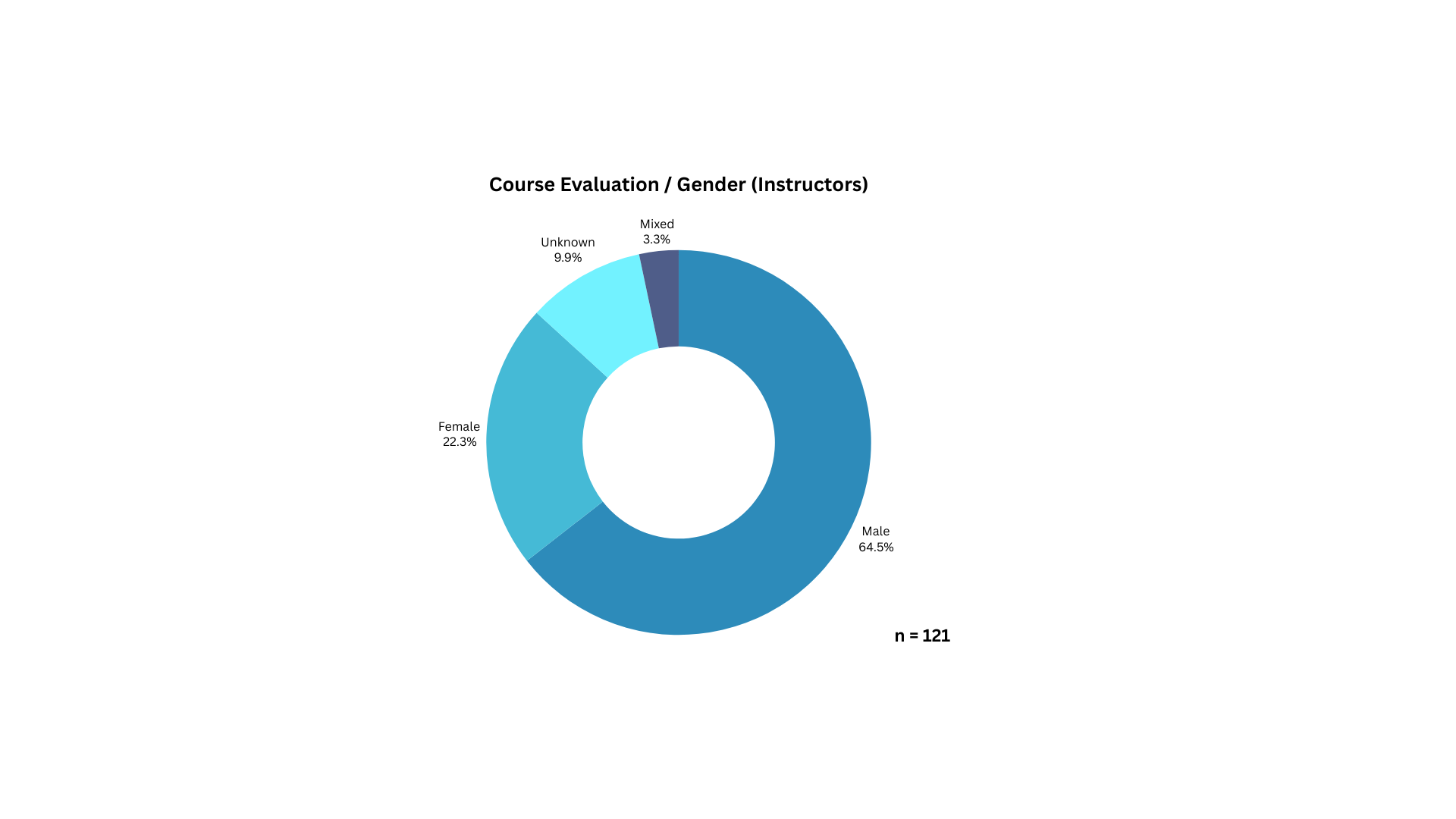
Nuclear Weapon Status
Most of the courses in our dataset were taught in nuclear weapon states (50.4%) or countries that participate as host nations in NATO nuclear sharing (19.2%). This would suggest that non-proliferation and disarmament education is more prevalent in countries which rely on nuclear deterrence for their security, although the distribution might be skewed due to the overly representation of Western universities.
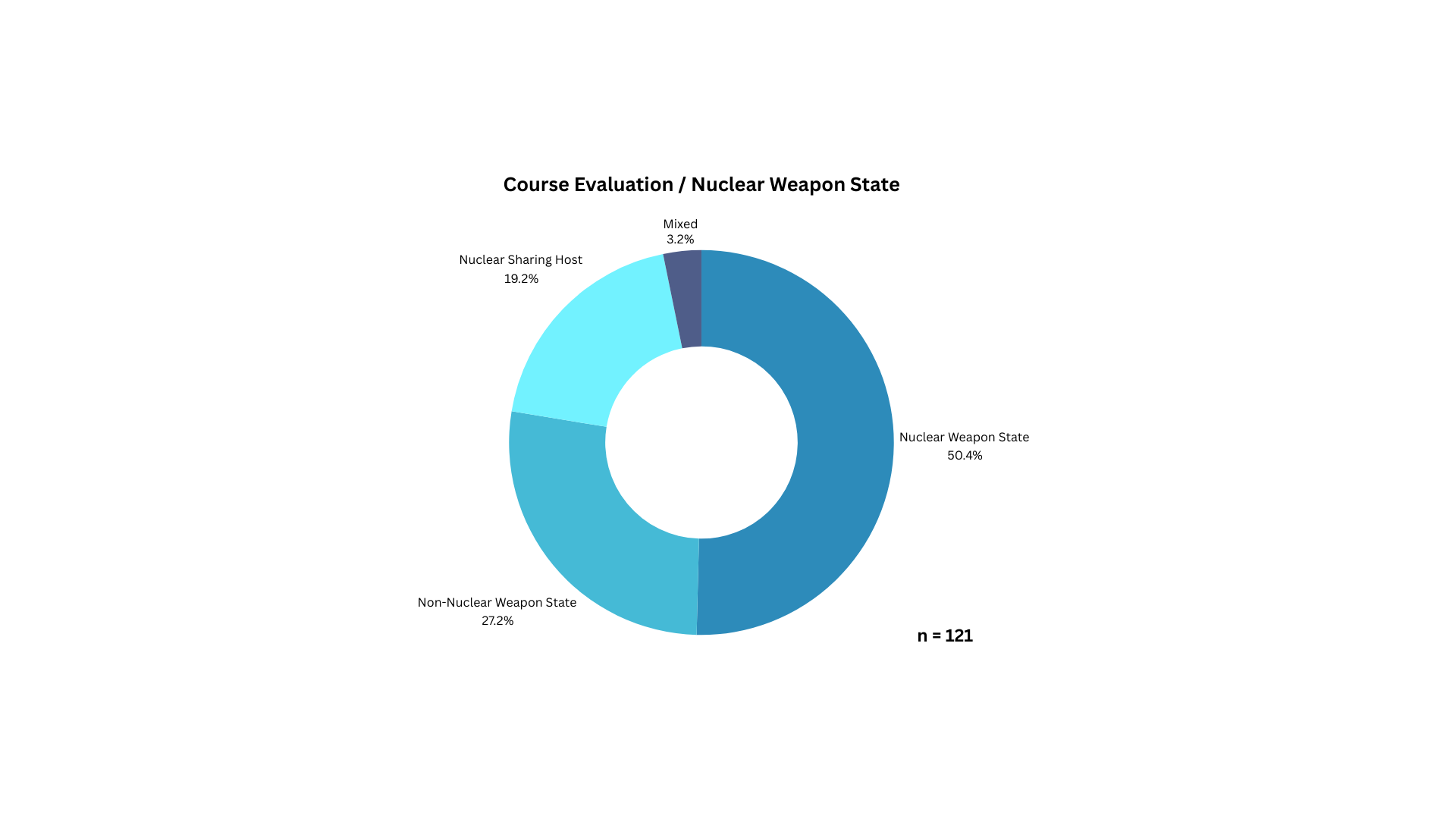
Syllabus Availability
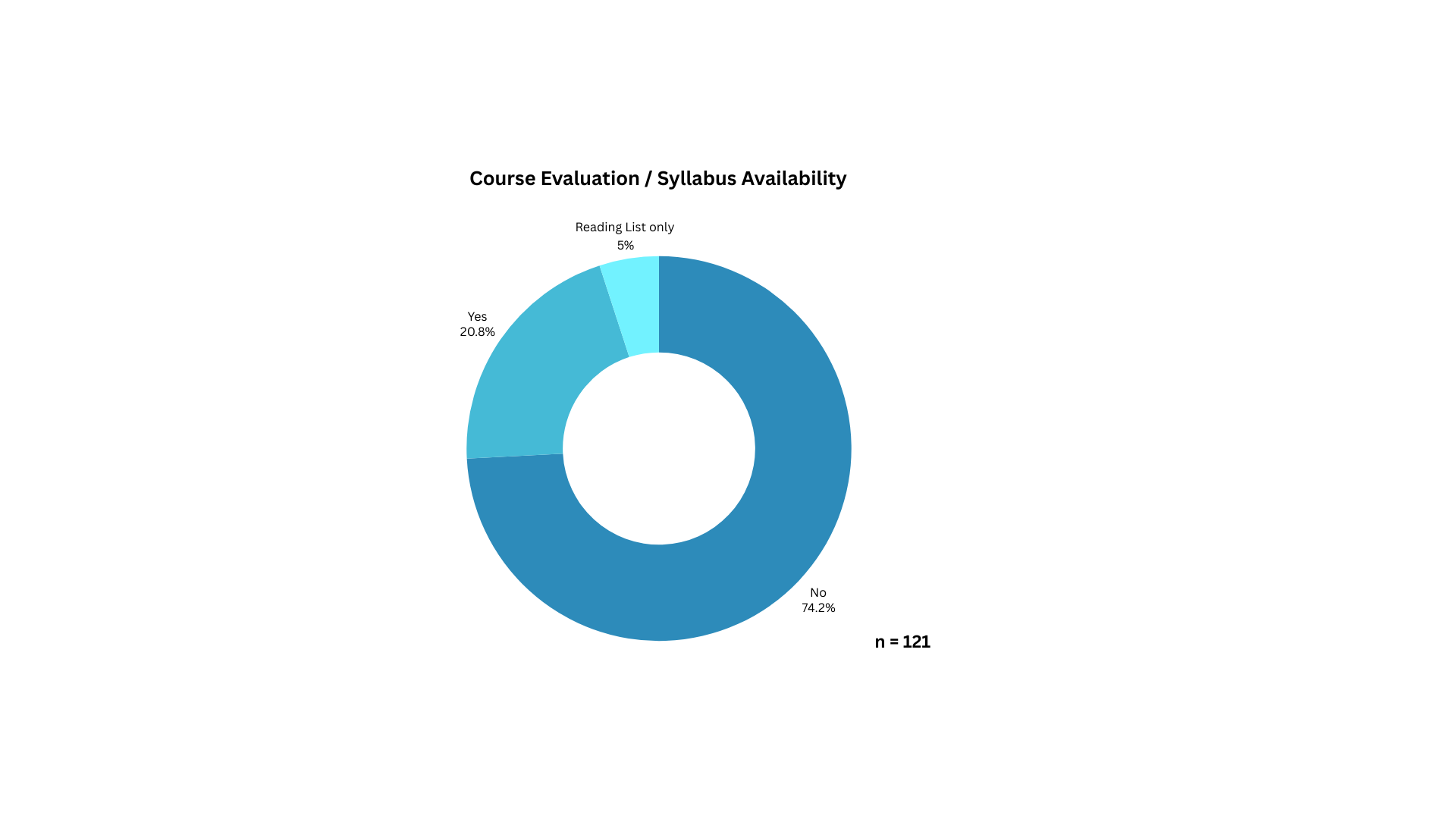
Evaluation Part II: Literature
Gender (Authors)
The gender distribution in non-proliferation and disarmament literature remains highly unbalanced. For almost three out of four mandatory readings we have analyzed, the authors were identified as male, while only 13.9% appear to be female..
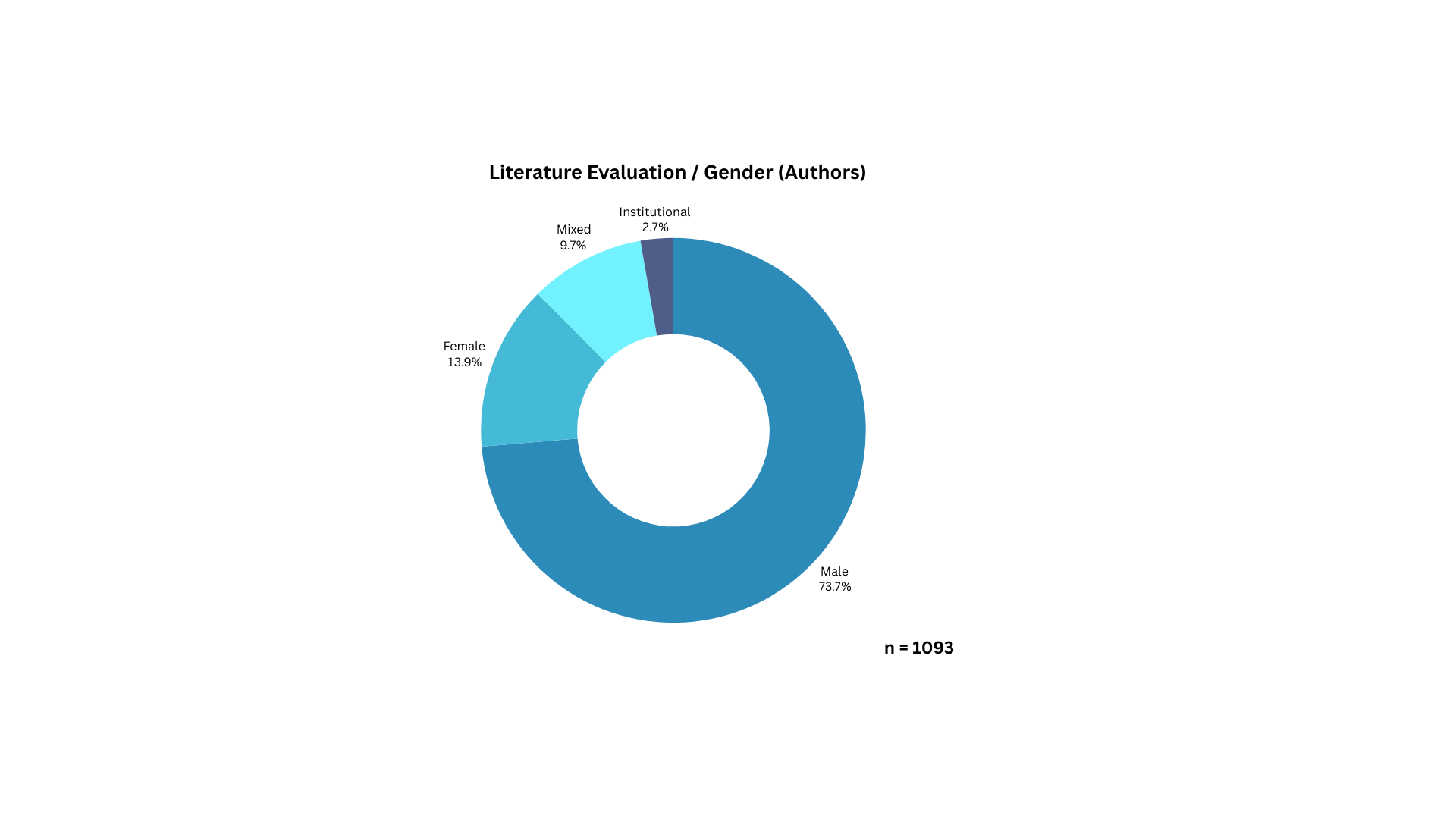
Reading Type
More than half of the assigned readings were journal articles (55%), followed by monographs (17.1%), edited volumes (10.9%) and reports by various institutions (8.6%). Occasionally, instructors also assigned blog posts and opinion pieces. The remaining 6% accumulate reading types didn’t make a significant impact.
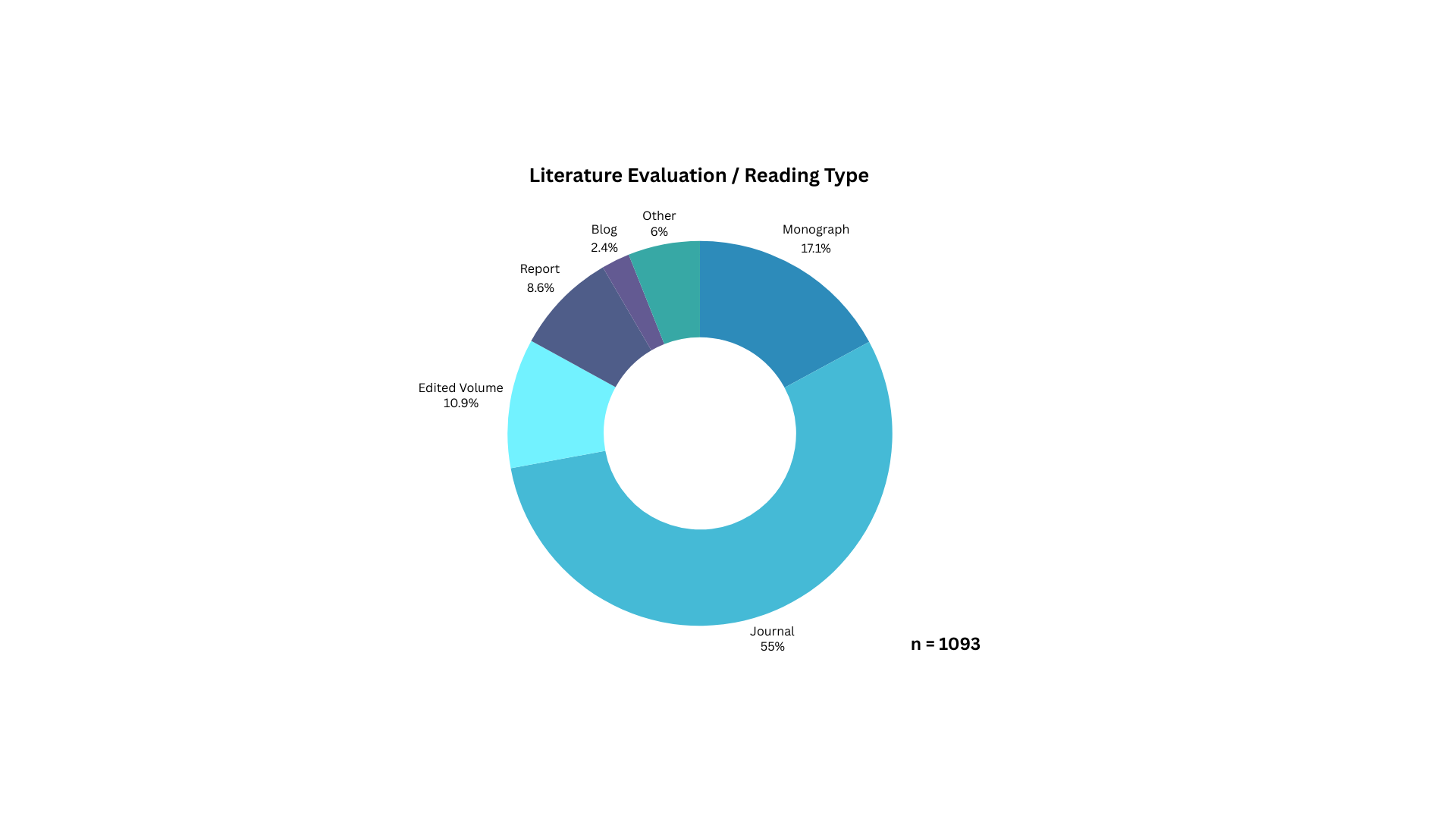
Most Popular Journals
The most frequently assigned journals (10< references) were International Security (23.1%), Bulletin (14.1%), The Nonproliferation Review (12.8%), and Foreign Affairs (9.1%), among many others.
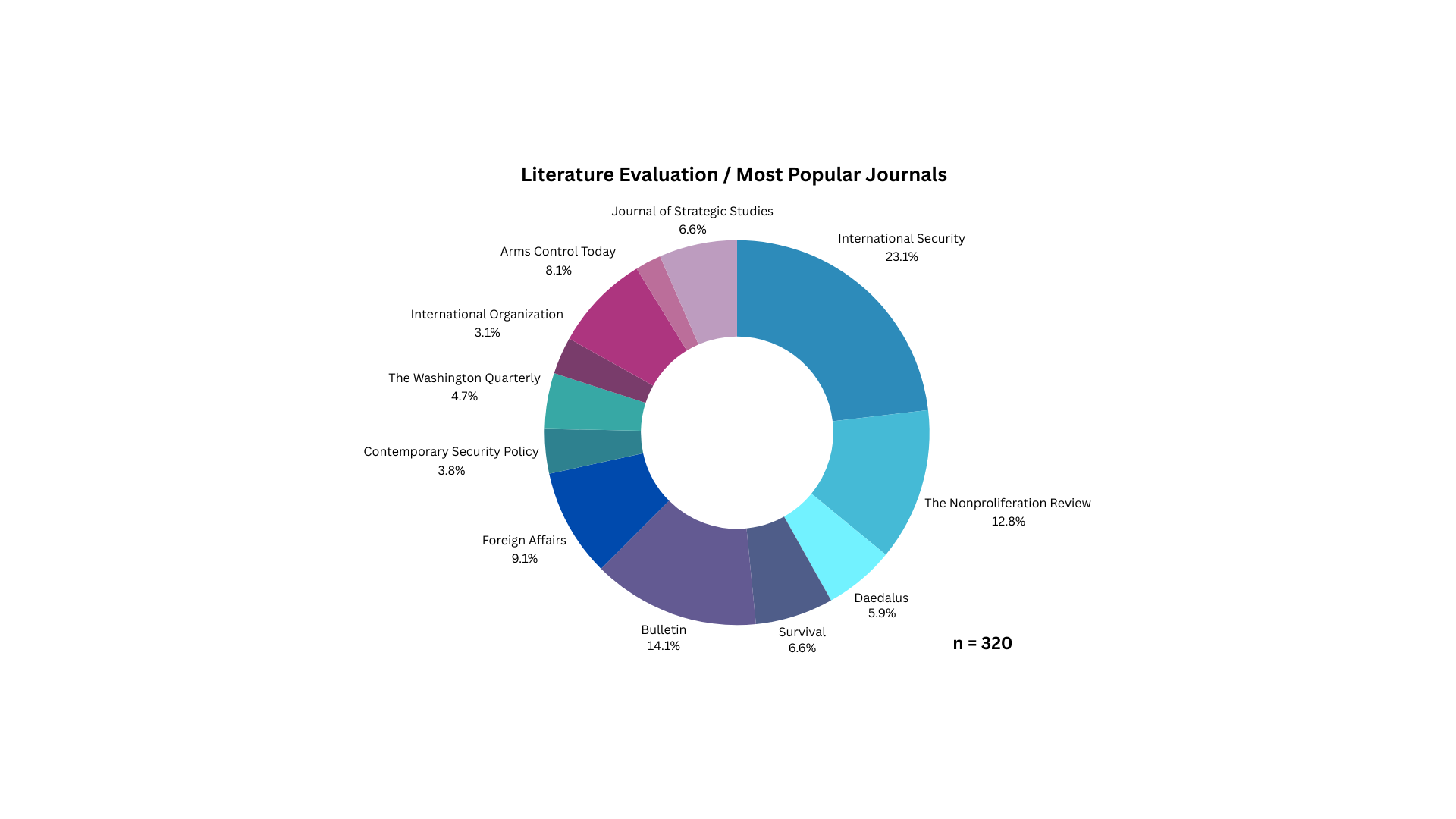
Weapon Types
By far the most frequent weapon type covered in the assigned readings are nuclear weapons (64%). This would suggest that non-proliferation and disarmament education is still very much influenced by the Cold War, although the overwhelming focus on nuclear weapons also seems to reflect their unique destructiveness.
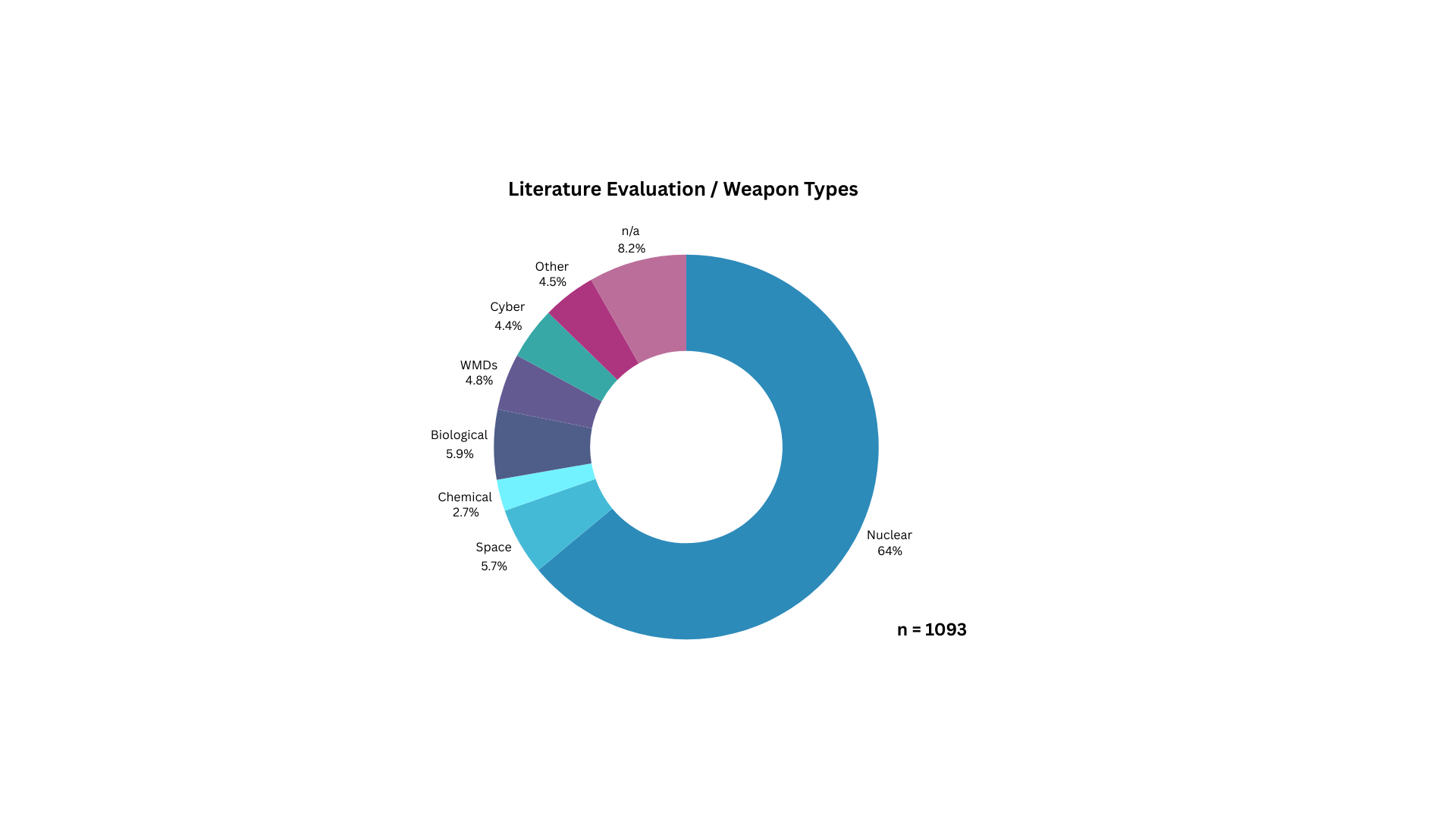
Concept
The concepts most frequently dealt with in the assigned literature are arms control (10.9%), non-proliferation (9.5%), and deterrence (9.4%) and proliferation (8.5%). Many readings, however, did not cover a specific concept (n/a) or couldn’t be summarized among the topics already proposed (Other).

Theories
As our data would seem to suggest, Realism remains the prevailing international relations theory in assigned readings about arms control, disarmament, and non-proliferation, with almost 30% of representation in the data. However, there appears to be a trend to include neorealist (11.5%) and constructivist (6%) approaches as well. Almost half of the readings did not refer to any international relations theory at all (36.5%) or belonged to other theories (13.4%).
